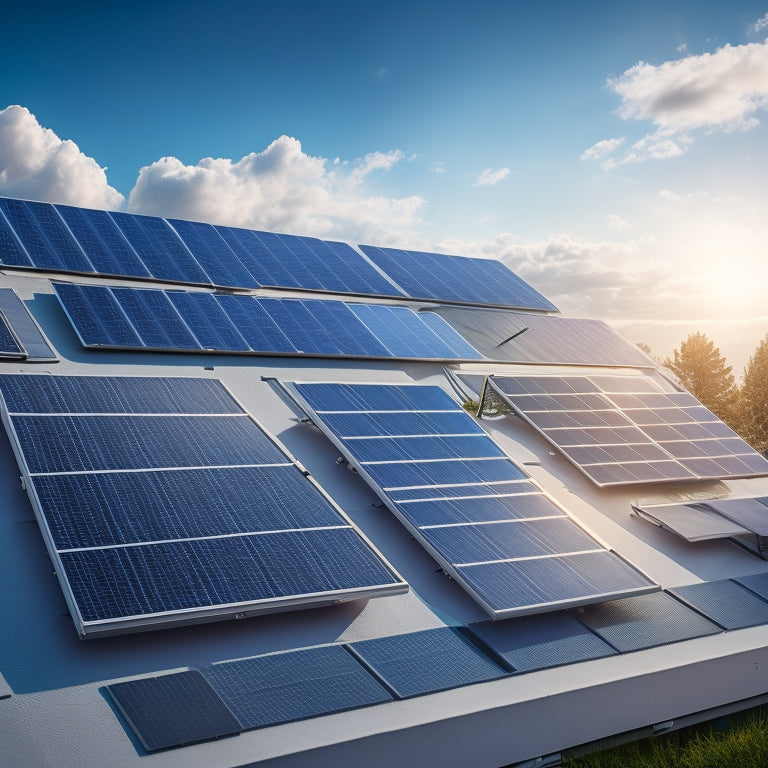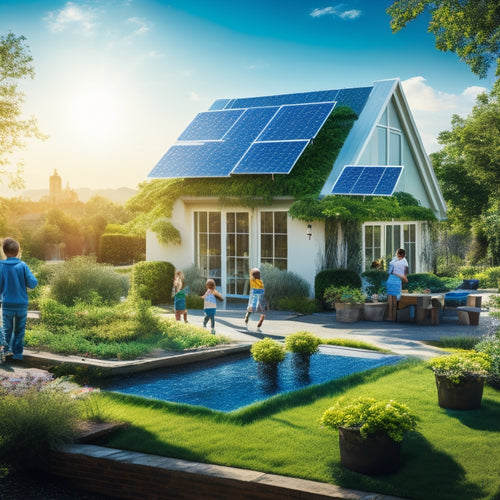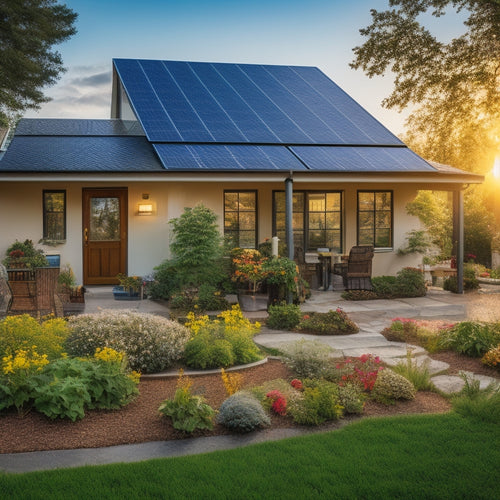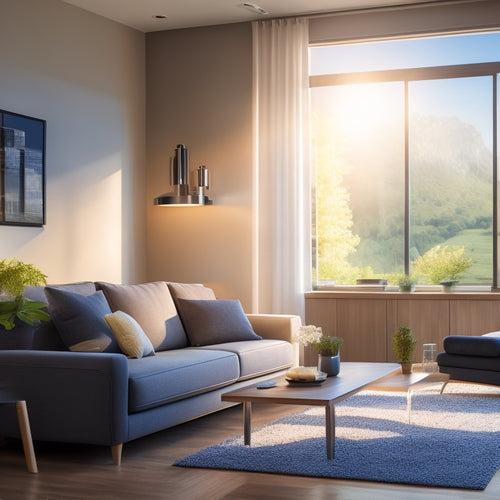
What Are Different Solar Panel Sizes for Residential Use
Share
You have a wide range of solar panel sizes to choose from for your residential project, with options varying in physical dimensions, power output, and efficiency to accommodate different roof sizes, energy needs, and local building codes. Standard sizes optimize performance for various roof dimensions and energy needs, while larger format panels offer higher power outputs but may be heavier and more costly. Smaller, high-efficiency panels are suitable for tiny homes or remote cabins, and custom-made panels can fit irregularly shaped roofs. By understanding the different options, you'll be able to find the perfect fit for your specific needs and take the next step towards utilizing solar energy.
Key Takeaways
- Residential solar panels come in various sizes, ranging from 250 to 390 watts, with specific dimensions for each wattage output.
- Standard sizes, such as 39.3 x 65.1 inches, optimize performance for various roof dimensions and energy needs.
- Large format panels offer higher power outputs, ideal for maximizing energy production with fewer panels on the roof.
- Specialty panels cater to unique residential needs, including limited roof space, irregularly shaped roofs, and aesthetically pleasing designs.
- Choosing the right solar panel size balances energy output, installation costs, and roof compatibility.
Residential Solar Panel Dimensions
When contemplating residential solar panels, one of the primary factors to think about is the physical dimensions of the panels themselves. You'll want to ascertain the panels fit comfortably on your roof while also meeting your energy needs.
The dimensions of solar panels can impact their efficiency, with larger panels often boasting higher power outputs. However, larger panels may not always be the best choice, as they can be more expensive and heavier, which may affect installation factors.
You'll need to evaluate the available roof space, local building codes, and structural integrity when selecting the right solar panel dimensions for your home. A larger panel may not be suitable for smaller roofs or those with complex angles.
On the other hand, smaller panels may be more versatile but less efficient. By balancing solar panel efficiency with installation factors, you can find the ideal dimensions for your residential solar panel system.
Standard Solar Panel Sizes
Typically, residential solar panels come in standard sizes to cater to various roof dimensions and energy requirements. These standard sizes guarantee that you can optimize your solar panel system's performance while taking into account your roof's constraints.
When selecting a solar panel size, you'll want to reflect on factors that impact your system's overall efficiency. Here are some key considerations:
-
Solar panel efficiency: Standard sizes often prioritize energy output over physical space. By choosing a more efficient panel, you can generate more power from a smaller area.
-
Installation considerations: Standard sizes simplify the installation process, as they're designed to fit common roofing layouts. This reduces installation time and costs.
-
System design flexibility: With standard sizes, you can mix and match panels to create a system that meets your energy needs. This flexibility allows you to adapt to unique roof shapes or obstructions.
Common Residential Panel Sizes
You've narrowed down your options by considering the key factors that impact your solar panel system's performance. Now, it's time to investigate the most common residential panel sizes. These sizes are widely used due to their ideal balance of efficiency ratings, installation requirements, and cost-effectiveness.
| Panel Size (Watts) | Dimensions (Inches) |
|---|---|
| 250-270 | 39.3 x 65.1 |
| 280-300 | 40.9 x 66.7 |
| 310-330 | 41.7 x 67.7 |
| 340-360 | 42.5 x 69.3 |
| 370-390 | 43.3 x 70.9 |
These common residential panel sizes range from 250 to 390 watts, with corresponding dimensions that fit seamlessly on most rooftops. When choosing a panel size, consider your available roof space, energy requirements, and desired efficiency ratings. Keep in mind that larger panels may require more installation materials and labor, increasing overall costs. By selecting the right panel size, you can maximize your energy output while staying within your budget.
Large Format Solar Panels
Several manufacturers are now producing large format solar panels, which boast higher power outputs and larger dimensions than their standard counterparts.
These panels are ideal for homeowners who want to maximize their energy production while minimizing the number of panels on their roof.
When considering large format solar panels, you'll need to think about installation considerations, such as the structural integrity of your roof and the weight capacity of your mounting system.
You'll also want to look at efficiency ratings, as these panels often have higher ratings due to their larger surface area.
Some benefits of large format solar panels include:
- Increased energy production per panel, resulting in fewer panels needed for your system
- Improved efficiency ratings, which can lead to more power per hour of sunlight
- A sleeker appearance, with fewer panels and more uniform spacing between them
Specialty Solar Panel Sizes
Specialty solar panels cater to unique residential needs, such as limited roof space or non-traditional installations. These panels are designed to meet specific requirements that standard solar panels can't fulfill.
You may need specialty solar panels for specialty applications, such as powering a tiny home or a remote cabin. In these cases, smaller solar panels with higher efficiency ratings can be more effective.
Specialty solar panels also come into play when dealing with unique installations. For example, if you have a curved or irregularly shaped roof, standard solar panels mightn't fit. That's where specialty solar panels come in – they can be custom-made to fit your roof's unique shape.
Additionally, specialty solar panels can be used for building-integrated photovoltaics (BIPV), where the solar panels are integrated into the building's facade or roof. This allows for a more seamless and aesthetically pleasing installation.
Frequently Asked Questions
Can I Mix and Match Different Solar Panel Sizes on My Roof?
You can mix and match different solar panel sizes on your roof, but ascertain panel compatibility and consider your roof's layout to maximize energy production and minimize installation challenges.
Do Larger Solar Panels Produce More Electricity per Hour?
You'll find that larger solar panels don't always produce more electricity per hour; it's panel efficiency that matters. While bigger panels can generate more power, installation considerations like roof space and shading can impact output, so it's essential to assess your specific situation.
How Do I Determine the Best Solar Panel Size for My Energy Needs?
As you traverse the solar terrain, chart your energy consumption to determine the best panel size; consider panel efficiency, too, to maximize your harvest, and don't forget to factor in local irradiance and roof space constraints.
Are There Any Solar Panels Specifically Designed for Small Roofs?
You'll find compact solar panels designed specifically for small roofs, prioritizing roof compatibility, which are ideal for urban homes or those with limited space, offering efficient energy production without compromising on performance or aesthetics.
Can I Use Solar Panels With Different Voltages in the Same System?
You're steering through a complex grid, and voltage compatibility is key. Mixing panels with different voltages can be a recipe for disaster, but with the right system design, you can utilize their unique strengths, optimizing system efficiency and releasing maximum power.
Conclusion
As you weigh your residential solar panel options, remember that size matters. On one hand, standard panels fit snugly on rooftops, providing a seamless look. On the other hand, large format panels maximize energy production, but may appear bulky. Meanwhile, specialty panels can be customized to fit unique rooflines, but may come at a premium. Ultimately, the right size for you will depend on your energy needs, budget, and personal style.
Related Posts
-

Solar Energy Benefits for Sustainable Living
Solar energy provides numerous benefits for sustainable living that you can't overlook. By switching to solar, you'll...
-

How to Achieve Energy Independence at Home
To achieve energy independence at home, start by investing in renewable energy sources like solar panels, wind turbin...
-

Integrating Smart Technology for Energy Savings
Integrating smart technology into your home is a transformative factor for energy savings. Smart thermostats give you...


